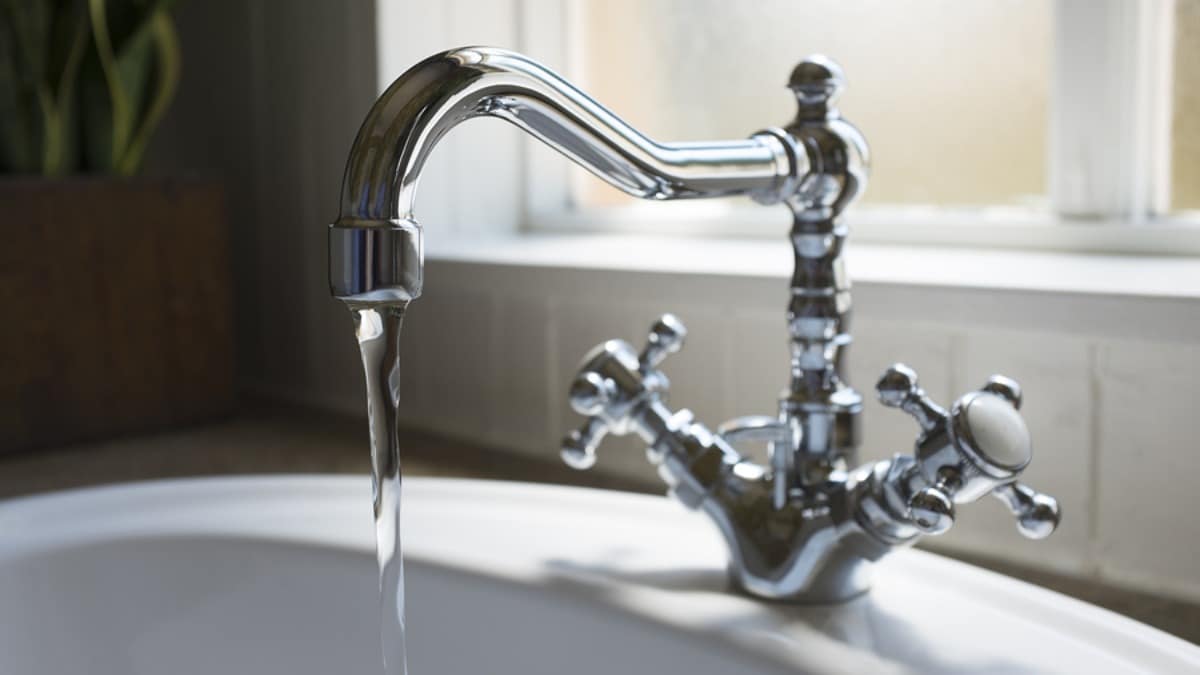With advancements in materials science and engineering, smart windows have evolved from being mere panes of glass to dynamic components that can actively respond to environmental conditions.
Imagine windows that can automatically adjust their tint to regulate light and heat entering your home, or ones equipped with integrated sensors that react to changes in temperature or sunlight intensity.
The concept may seem straight out of science fiction, but these innovations are now becoming increasingly accessible for homeowners looking to upgrade their living spaces with cutting-edge technology.
In this article, we have provided comprehensive guidelines and steps on How Smart Windows Work in Homes. Read through.
Table of contents
- What are Smart Windows?
- How Smart Windows Work in Homes
- What are the Types of Smart Windows?
- What are the benefits of Smart Windows in Homes?
- What are the Steps to Installing Smart Windows?
- What are the Considerations for Installing Smart Windows?
- Integration with Smart Home Systems
- FAQs
- Conclusion
- References
- Recommendations
What are Smart Windows?
Smart windows, also known as switchable windows, are an innovative technology designed to dynamically control the amount of light and heat that enters a building.
By incorporating advanced materials and smart tinting techniques, smart windows can change their transparency or color in response to external stimuli such as light, heat, or voltage.
This innovative feature not only enhances the aesthetic appeal of buildings but also improves energy efficiency by reducing heating and cooling costs.
One key advantage of smart windows is their ability to mitigate glare and regulate indoor temperature without obstructing outside views.
They have the potential to revolutionize the way we interact with our built environment by creating more comfortable and sustainable living and working spaces.
Read ALSO: Three-Way Lights – How Three-Way Switches Work
How Smart Windows Work in Homes
The underlying mechanism behind smart windows revolves around these intelligent materials, typically embedded between two panes of glass.
When an electrical current passes through the electrochromic material, its tint changes, either darkening or lightening.
Similarly, thermochromic materials respond directly to temperature changes, altering their transparency accordingly.
What are the Types of Smart Windows?
There are different types of smart windows, including:
1. Electrochromic Technology
This type of smart window uses electrochromic materials, typically metal oxides, embedded between layers of glass.
When a small electrical voltage is applied, ions move between these layers, causing a change in the material’s colour or opacity. Reversing the voltage reverses the process, returning the window to its original state.
Read Also: How To Get Gum From Shoes
2. Thermochromic Technology
Thermochromic smart windows contain materials that respond to changes in temperature. These materials alter their molecular structure in response to heat, causing the window to become darker or lighter.
When it’s hot, the window might darken to reduce heat and glare, while in colder conditions, it can become clearer to allow more light in.
3. Photochromic Technology
Photochromic windows incorporate compounds that react to UV light. When exposed to sunlight or UV radiation, these compounds undergo a chemical change, causing the window to darken. Once the UV exposure diminishes, the window gradually returns to its original state.
4. Liquid Crystal Technology
Liquid crystal windows use a layer of liquid crystal molecules sandwiched between layers of glass. Applying an electric current aligns these molecules, making the window transparent. When the current is turned off, the molecules scatter, making the window opaque or tinted.
What are the benefits of Smart Windows in Homes?
Smart windows offer a compelling array of benefits that enhance both energy efficiency and comfort within homes:
- Energy Efficiency: By regulating the amount of natural light and heat entering a building, smart windows can significantly reduce energy consumption, potentially slashing up to 50% of energy costs. This translates into substantial savings on utility bills and a reduced environmental footprint.
- Enhanced Comfort: Smart windows effectively manage glare and heat gain, creating a more comfortable and inviting indoor environment. They can prevent the excessive heat and discomfort caused by harsh sunlight, while also maintaining a warm and cozy atmosphere during colder months.
- Privacy Control: Smart windows offer an elegant solution to privacy concerns. With the ability to switch from transparent to opaque, they provide instant privacy when needed, particularly in areas like bathrooms and bedrooms.
- Aesthetics and Design: Smart windows not only enhance functionality but also elevate the aesthetic appeal of a home. Their sleek and modern design complements contemporary architectural styles, adding a touch of sophistication and innovation to any living space.
Read Also: How to Do Home Electrical Repairs on Your Own: Full Guide
What are the Steps to Installing Smart Windows?
Installing smart windows involves a series of steps that require careful planning, precision, and specialized expertise. Here’s a comprehensive guide to installing smart windows:
Step 1: Planning and Preparation
- Consult with a Professional: Before embarking on the installation process, consult with a qualified and experienced installer to assess your specific needs, requirements, and the suitability of smart windows for your home.
- Gather Necessary Information: Obtain accurate measurements of the window openings, including width, height, and depth. Assess the electrical configuration and ensure adequate power supply for the smart windows.
- Choose Smart Window Type: Select the type of smart windows that best suits your needs and preferences, considering factors like tint control mechanism, energy efficiency ratings, and aesthetic appeal.
- Obtain Permits and Approvals: If necessary, obtain any required permits or approvals from local authorities before proceeding with the installation.
Step 2: Window Removal and Preparation
- Protect Surrounding Areas: Cover and protect surrounding areas, including furniture, flooring, and walls, to prevent damage during the removal and installation process.
- Disconnect Electrical Supply: Turn off the power supply to the existing windows to ensure safety during removal and prevent electrical hazards.
- Remove Existing Windows: Carefully remove the existing windows, taking note of any framing details, hardware, and electrical connections. Dispose of old windows responsibly.
- Prepare Window Opening: Clean and prepare the window opening, ensuring it is free of debris, dirt, and any irregularities that could hinder the proper installation of the new smart windows.
Read Also: How to Repair an Oven: Tips and Guidelines
Step 3: Smart Window Installation
- Install Framing and Mounting Hardware: Install the appropriate framing and mounting hardware according to the manufacturer’s instructions and specifications. Ensure the framing is secure and level to support the weight of the smart windows.
- Position Smart Windows: Carefully position the smart windows into the prepared openings, ensuring they are aligned correctly and plumb (vertically straight). Check for proper clearance and gaps.
- Secure Smart Windows: Secure the smart windows to the framing using the appropriate fasteners and hardware, following the manufacturer’s guidelines. Ensure the windows are firmly attached and stable.
- Connect Electrical Supply: Connect the electrical supply to the smart windows, following the manufacturer’s instructions and electrical safety codes. Ensure all connections are secure and properly insulated.
4: Testing and Finishing
- Test Functionality: Test the functionality of the smart windows by operating the tint control mechanism and ensuring they respond correctly to electrical signals or temperature changes.
- Adjust and Calibrate: Adjust and calibrate the smart windows according to your preferences and desired performance. Check for any unevenness or gaps in the installation.
- Clean and Finish: Clean the smart windows and surrounding areas to remove any debris or residue from the installation process. Apply finishing touches, such as caulking or sealant, to ensure a clean and professional appearance.
Step 5: Maintenance and Troubleshooting
- Regular Cleaning: Regularly clean the smart windows using recommended cleaning methods to maintain their transparency and prevent scratches or damage.
- Check Electrical Connections: Periodically check the electrical connections for any signs of wear, damage, or loose connections.
- Troubleshooting: In case of any issues or malfunctions, consult the manufacturer’s troubleshooting guide or contact a qualified technician for assistance.
Read Also: How to Clean Bathtub Jets
What are the Considerations for Installing Smart Windows?
Before embarking on the journey of installing smart windows, it’s crucial to consider several factors:
- Cost: Smart windows, due to their advanced technology, come with a higher price tag compared to traditional windows. However, the long-term energy savings and overall benefits can offset the initial investment over time.
- Installation: Unlike traditional windows, smart windows require more specialized installation procedures. Engaging a qualified and experienced installer ensures proper integration and optimal performance.
- Maintenance: Smart windows, like any technology, require occasional maintenance, primarily involving cleaning the electrochromic or thermochromic material to maintain its effectiveness.
Integration with Smart Home Systems
Smart windows can be seamlessly integrated with smart home systems to provide an enhanced level of convenience, automation, and control. By connecting smart windows to a central smart home system, homeowners can enjoy a range of benefits, including:
1. Automated Tint Control:
Schedule or program your smart windows to automatically adjust their tint based on the time of day, weather conditions, or occupancy of the room. This ensures optimal comfort and energy efficiency throughout the day.
2. Sensor-Based Control:
Integrate smart windows with sensors to trigger tint adjustments based on specific conditions. For instance, sensors can detect sunlight intensity and automatically adjust the tint to reduce glare or heat gain.
3. Voice Control Compatibility:
Utilize voice assistants like Alexa, Google Assistant, or Siri to control the tint of your smart windows with simple voice commands. This adds a layer of hands-free convenience to your home automation experience.
4. Scene Creation:
Create customizable scenes that combine smart window adjustments with other smart home devices, such as lighting, blinds, and thermostats. This allows you to set the perfect ambience for different activities or moods.
5. Remote Monitoring and Control:
Monitor and control your smart windows remotely using a smartphone or tablet app. This enables you to adjust tint settings even when you’re away from home, ensuring optimal comfort and energy efficiency.
6. Personalized Control:
Customize smart window settings to suit your individual preferences and lifestyle. Adjust tint levels based on your sensitivity to light or your preferred level of privacy.
7. Energy Optimization:
Utilize smart windows to optimize energy consumption by automatically adjusting tint to reduce heat gain during summer and heat loss during winter. This can lead to significant savings on energy bills.
Integrating smart windows with smart home systems unlocks a world of possibilities, transforming your home into a more responsive, energy-efficient, and comfortable living space.
Read ALSO: How to Make Homemade Dog Repellent
FAQs
Smart windows are windows that can change their tint or transparency in response to environmental conditions or user commands.
Smart windows use technologies such as electrochromism, thermochromism, or suspended particle devices to alter their tint or transparency.
Smart windows can help regulate indoor temperature, reduce glare and UV exposure, and enhance energy efficiency.
Yes, many smart window systems can be controlled remotely through smartphone apps or home automation systems.
Conclusion
Smart windows stand at the forefront of home automation technology, poised to transform our living spaces into energy-efficient, comfortable, and responsive environments. As technology continues to evolve, smart windows are bound to become more affordable, efficient, and widely accessible, bringing their transformative benefits to homes across the globe.





